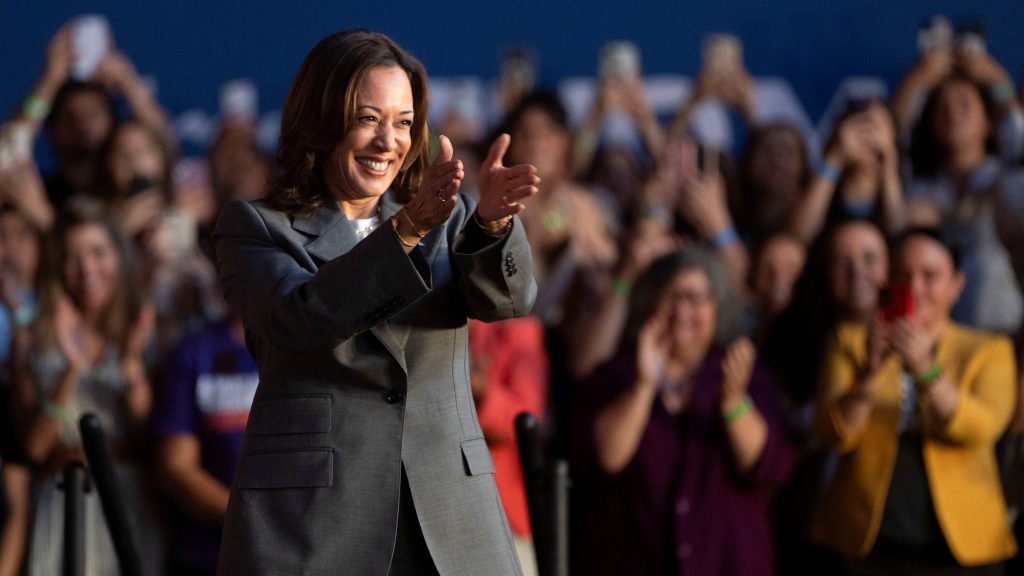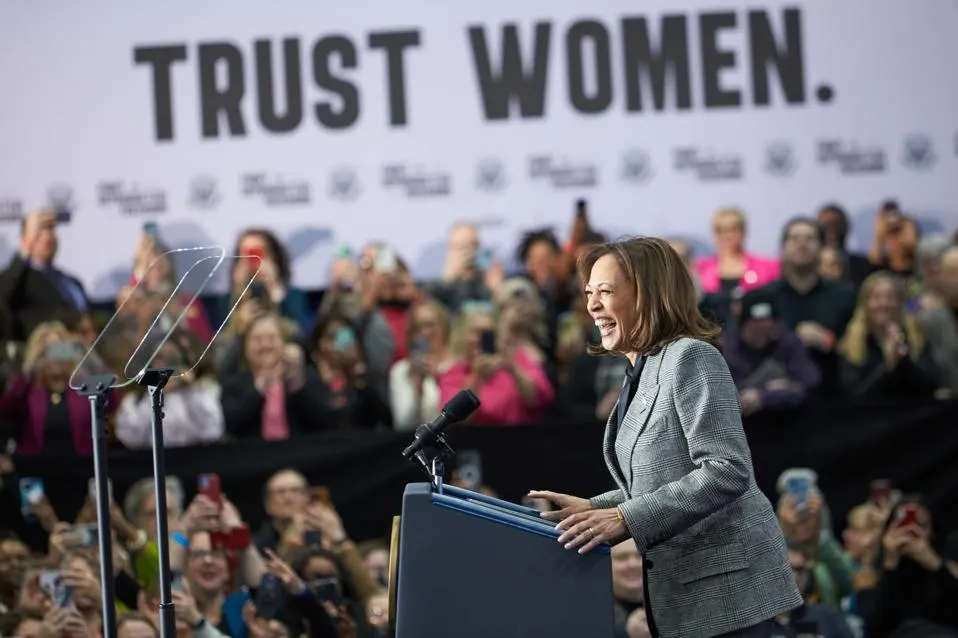Early Vote Surge Among Young Women Could Shape Election Results.
As election day approaches, battleground states like Arizona and Michigan are witnessing an energizing wave of young women lining up to cast their votes early. This surge in participation is generating significant attention, particularly for Vice President Kamala Harris, who is counting on this demographic to help turn the tide in what promises to be a closely contested election.
On an unusually warm fall morning at the University of Michigan’s Ann Arbor campus, dozens of students gathered outside the university’s early voting center, eager to make their voices heard. Among the voters was Keely Ganong, a third-year student whose enthusiasm for Harris was palpable. “She’s just a leader that I would look up to to represent my country,” she expressed, reflecting a sentiment shared by many of her peers.
The issues of gender equality and abortion rights are at the forefront of young women’s minds, with Harris’s campaign resonating strongly with voters who view these topics as pivotal to their choices at the polls. Keely’s friend, Lola Nordlinger, emphasized this connection: “A woman’s choice is something that’s so personal to her, and it really should be no one else’s decision.” With less than a week until election day, discussions about voting are pervasive on campus, with many young people convinced that their participation will significantly impact the outcome.

Adrianna Pete, a 24-year-old who volunteers to educate students about the democratic process, noted a growing movement among women: “I feel like a lot of women are rising up.” This wave of support for Harris among young women reflects a broader trend captured by recent polling data. According to a survey conducted by the Harvard Institute of Politics, Harris enjoys a remarkable 30-point lead among women aged 18 to 29, while another study from Inside Higher Ed/Generation Lab found that she leads by an impressive 38 points among college students.
With national polls indicating a tight race, particularly in battleground states like Michigan, Harris’s campaign is banking on these young women to mobilize and vote in large numbers. The potential for high turnout among women is bolstered by previous election cycles; in 2020, around 10 million more women than men cast their votes, according to the Center for American Women in Politics. Early voting exit polls this year suggest a similar trend, with approximately 55% of early voters being women, though the specifics of their voting preferences remain uncertain.
The narrative surrounding the election has often been framed as a battle of the sexes, yet the reality is more nuanced. A closer examination of the data reveals that Harris’s lead among white women under 30 is just 13 points ahead of Trump. In contrast, she holds a striking 55-point advantage among non-white women in the same age bracket. When expanding the focus to include white women of all ages, Harris’s lead diminishes significantly. This trend mirrors the outcomes of previous elections, where a notable proportion of white women voted for Trump over Hillary Clinton in 2016 and again in 2020.

Pollster Evan Roth Smith from Blueprint emphasizes the critical demographic of women in swing states, particularly those who did not attend college. “The best avatar for a voter writ large is a woman in a swing state who didn’t go to college,” he notes. While these women may have traditionally leaned towards the Republican Party on issues such as immigration and the economy, abortion rights could be the key factor that sways them in Harris’s direction.
The urgency of abortion rights as a campaign issue is palpable, especially in states like Arizona, where a ballot question will allow voters to decide whether the right to abortion should be enshrined in the state constitution. Currently, Arizona has stringent abortion laws, allowing the procedure only up to 15 weeks with few exceptions. For voters like Mary Jelkovsky, the implications of such decisions resonate deeply. Wearing a bright blue sweatshirt emblazoned with the slogan “vote with your vag,” she expressed her concern over the erosion of rights previously guaranteed by Roe v. Wade.
Jelkovsky shared that discussions around abortion have opened up critical conversations with friends and family, many of whom have had personal experiences with the issue. “It’s personal but it’s so important to have these conversations,” she stated. As she and her husband begin to consider starting a family, the stakes of the election feel particularly high. For many young women like her, the outcome could determine the future of reproductive rights in their state and beyond.
Harris’s campaign hopes that the abortion issue will not only galvanize Democratic voters but also attract Republican women who might be inclined to flip their allegiance. These so-called “silent” Harris voters could prove vital in close races, where every vote counts. Rebecca Gau, a 53-year-old from Arizona who has been a lifelong Republican, illustrates this potential shift. Disenchanted with Trump’s approach, she voted for Biden in 2020 as a protest vote. This time around, she feels excited to cast her ballot for Harris, whom she sees as a representative of practical American women.
“I felt like she could represent me as a practical American woman,” Gau shared. She is not alone in feeling disillusioned by what she perceives as “toxic masculinity” within the current Republican leadership. Gau believes that many women in her situation are equally fed up and ready for change, regardless of their political affiliation.

However, not all Republican women are persuaded by the calls for change. Tracey Sorrel, a Texas-based member of the BBC’s Voter Panel, expressed her reservations about Harris, fearing that her approach to abortion rights could go too far. While she admits to disliking some of Trump’s rhetoric, she remains steadfast in her support for him, stating, “I’m not voting personality. I’m voting policy. I don’t have to marry the man.”
This division among women voters underscores the complexities of the electoral landscape. While Harris has a clear advantage among younger women and non-white demographics, she must still work to bridge the gap with older, white, and college-educated women who may hold differing views. The challenge lies in effectively communicating the importance of abortion rights while also addressing the broader economic and social concerns that resonate with a more conservative base.
As election day approaches, Harris’s campaign is ramping up its efforts to engage young voters, particularly women. With initiatives aimed at encouraging participation and mobilizing support, the hope is that these early voting trends will translate into a robust turnout on election day. The focus remains on empowering young women to make their voices heard, recognizing their potential to shape the outcome of this critical election.
The stakes have never been higher, and the conversations surrounding voting, gender equality, and abortion rights are driving a passionate discourse among young women across the country. The involvement of young voters in this election may very well redefine political landscapes in battleground states, potentially altering the trajectory of the nation.
In the end, whether Harris can galvanize this crucial voter demographic will be a determining factor in the election. With issues like abortion at the forefront and young women stepping up to claim their power, the call to vote resonates louder than ever. As they prepare to head to the polls, their enthusiasm and commitment could signal a new era in American politics, one where the voices of young women are finally heard and valued.




